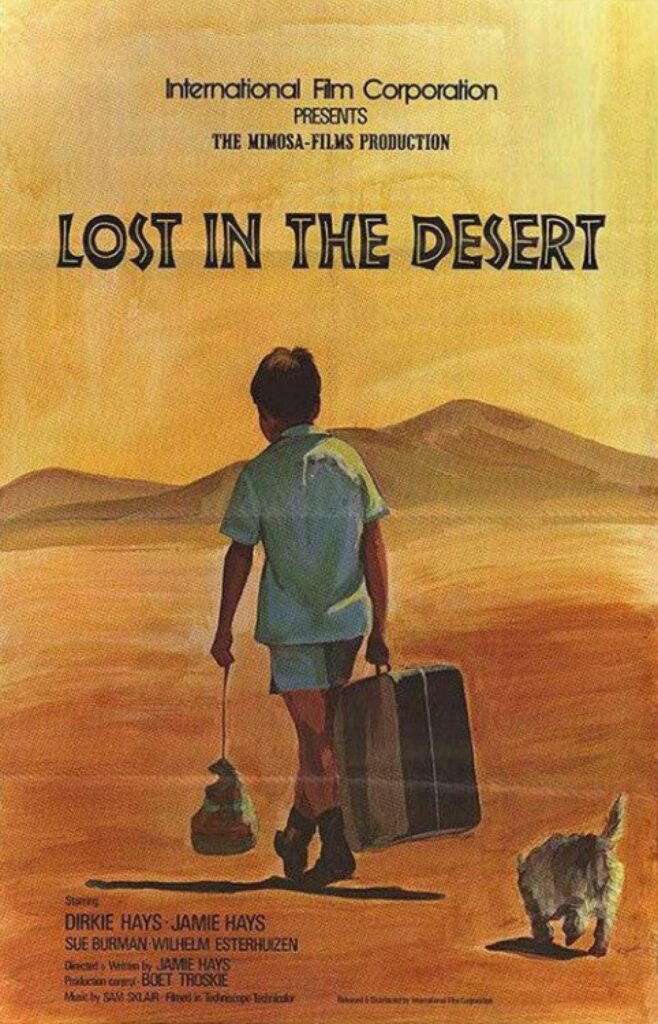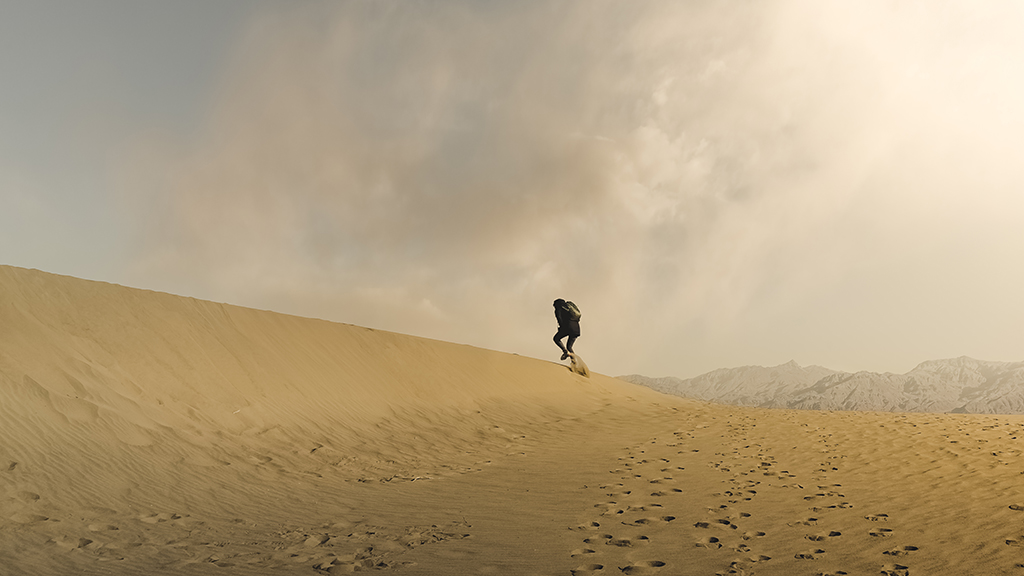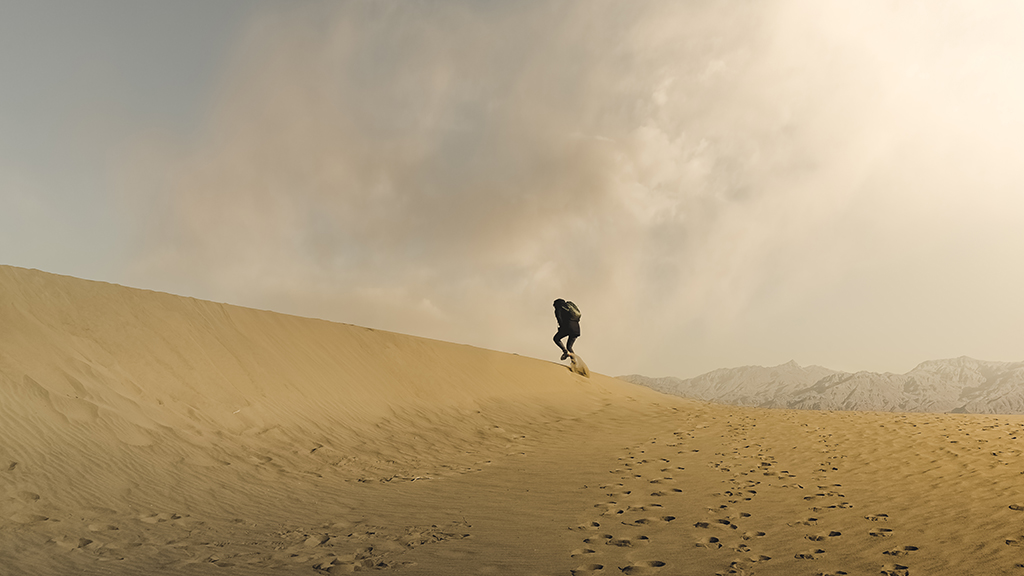Imagine finding yourself stranded in the vast expanse of a scorching desert with no signs of civilization in sight. As the blistering sun beats down upon the endless dunes of sand, you feel a wave of despair washing over you. With each step you take, you sink deeper into the unforgiving terrain, your strength waning and hope diminishing. The harsh reality of being lost in the desert begins to sink in, as you realize the true extent of the challenges that lie ahead. Endless stretches of sand, as far as the eye can see. The scorching sun beats down mercilessly, intensifying the already unbearable heat. This is the harsh reality of being lost in the desert, a treacherous environment that poses numerous challenges to survival. In this article, we will explore the strategies and techniques that can help you navigate and survive in the desert, from preparing for a desert trip to seeking help and rescue. So, read on and equip yourself with the knowledge and skills to conquer the desert.

Surviving the Desert
Understanding the Desert Environment
Before embarking on any desert adventure, it is crucial to have a thorough understanding of the environment you will be facing. Deserts are characterized by their extreme temperatures, lack of water sources, and sparse vegetation. The scorching heat during the day and the freezing cold at night can be life-threatening if not properly managed. Additionally, the vast expanse of sand dunes and rocky terrain can easily disorientate even the most experienced traveler. By familiarizing yourself with the desert environment, you can plan and prepare effectively, increasing your chances of survival.
Knowing the Potential Dangers
One of the most important aspects of survival in the desert is being aware of the potential dangers that lurk in this harsh environment. Heatstroke, dehydration, and hypothermia are among the immediate threats you may face. Venomous snakes, spiders, scorpions, and centipedes are also common in many desert regions and can deliver a deadly bite or sting. Insects, such as mosquitoes and flies, may also pose a nuisance. By recognizing these dangers, you can take appropriate precautions and minimize your risk of harm.
Maintaining Hydration Levels
In the desert, water is the key to survival. Dehydration can set in quickly due to the intense heat and dry climate. It is essential to maintain hydration levels by drinking water regularly, even if you do not feel thirsty. Carry an adequate supply of water with you and conserve it by rationing when necessary. Also, avoid consuming alcohol or caffeinated beverages as they can increase dehydration. If you run out of water, it is crucial to find alternative water sources to quench your thirst.
Conserving Energy
In a desert survival situation, conserving your energy is paramount. The harsh conditions make even simple tasks physically demanding. Avoid unnecessary exertion and pace yourself to avoid exhaustion. Rest during the hottest parts of the day and take advantage of the cooler temperatures in the early morning and late afternoon to increase your productivity. By conserving your energy, you can ensure that you have enough stamina to face the challenges that lie ahead.
Focusing on Basic Needs
When lost in the desert, it is essential to prioritize your basic needs for survival. Water, shelter, and food should be your main focus. As we discussed earlier, water is crucial, so finding a water source should be your top priority. Next, concentrate on building a shelter to protect yourself from the harsh elements. Finally, forage for food or utilize any provisions you may have brought with you. By addressing these fundamental needs, you can increase your chances of survival until help arrives.
Preparing for a Desert Trip
Researching the Desert Area
Before embarking on a desert trip, it is essential to conduct thorough research on the specific desert area you intend to visit. Familiarize yourself with its geography, climate, and any potential hazards that may exist. Understand the flora and fauna you may encounter to be prepared for encounters with dangerous creatures. Additionally, research the local customs, regulations, and any permits required for your trip. Knowledge is power, and by equipping yourself with information, you can plan a safe and enjoyable desert adventure.
Planning the Route
Once you have gathered sufficient information about the desert area, it is time to plan your route. Identify landmarks, such as distinctive rock formations or mountain ranges, that can serve as navigational references. Plot your course on a map and establish checkpoints to ensure you stay on track. Consider the distance you can comfortably travel each day and calculate the amount of water and supplies you will need. Having a well-thought-out plan will enhance your chances of staying on course and reaching your destination.
Informing Others
Whether you are embarking on a desert trip alone or with a group, it is crucial to inform someone responsible about your plans. Let them know the details of your trip, including your planned route and estimated return date. Provide them with emergency contact numbers, such as the local authorities, so that they can initiate search and rescue efforts if you fail to return as scheduled. Regularly update your contact person about any changes to your itinerary to ensure they have the most current information.
Packing Essential Items
When preparing for a desert trip, it is important to pack essential items that will assist you in your survival efforts. Some key items include a first aid kit, adequate water supply, navigation tools (such as a compass and map), a signaling device (such as a whistle or mirror), a multi-tool, a lighter or matches, a flashlight, extra clothing, sunscreen, and sunglasses. Consider the specific needs of your trip and tailor your packing list accordingly. Remember, the items you bring can make all the difference in a desert survival situation.
Signs of Getting Lost
Recognizing Changes in Landscapes
Recognizing changes in landscapes can be a valuable skill when trying to determine if you are heading in the right direction or if you may be getting lost. Pay attention to variations in terrain, such as the appearance of sand dunes, rock formations, or changes in vegetation. This awareness can help you reorient yourself and make necessary adjustments to your navigation.
Noticing the Sun’s Position
The position of the sun can serve as a valuable indicator of direction. In the Northern Hemisphere, the sun generally rises in the east and sets in the west. Observe the shadows cast by objects and your own body to discern the sun’s relative position. This knowledge can help you maintain a sense of direction and prevent getting disoriented.
Observing Tracks and Footprints
Tracks and footprints left by other creatures or even yourself can provide valuable clues about your path and direction of travel. Observe the tracks carefully and try to determine the direction they are heading. Additionally, take note of your own footprints to prevent doubling back or unintentionally deviating from your intended route.
Being Aware of Disorientation
Disorientation can quickly set in when lost in the desert. The absence of familiar landmarks, the intense heat, dehydration, and exhaustion can all contribute to a loss of direction or confusion. Be aware of these factors and regularly assess your surroundings to ensure that you are staying on track. If you feel disoriented, take a moment to gather your thoughts, reorient yourself, and refer to your map and compass if available.
Navigating in the Desert
Using a Compass
A compass is an invaluable tool for navigating in the desert. Familiarize yourself with its operation and understand how to read the different headings. Use your compass in conjunction with your map to plot your direction of travel accurately. By consistently referring to your compass, you can maintain a sense of direction and reduce the likelihood of getting lost.
Identifying Landmarks
Identifying and utilizing landmarks is an effective way to navigate in the desert. Look for distinctive rock formations, distinctive tree formations, or other easily identifiable features that can serve as reference points. Make a mental note of these landmarks or mark them on your map to ensure you stay on course.
Using the Stars and Moon for Navigation
At night, when the stars and moon are visible, they can provide valuable navigational cues. Learn to identify prominent constellations and their relative position in the sky. The North Star, also known as Polaris, can serve as a reliable point of reference for determining north. Additionally, the moon’s position and phase can provide information about the time of night and general direction. By harnessing the power of celestial navigation, you can stay on track, even when darkness blankets the desert landscape.

Finding Water Sources
Search for Natural Water Sources
When lost in the desert, finding a water source becomes your top priority. Begin by searching for natural water sources, such as streams or springs. Look for areas with vegetation, as they may indicate the presence of underground water sources. Be cautious, however, as not all water in the desert is safe to drink. Filter water through a piece of cloth or use a water purification method to remove impurities and reduce the risk of waterborne illnesses.
Collecting Dew and Rainwater
Dew and rainwater offer additional sources of hydration in the desert. Set up a collection system to catch dew or rainwater, such as placing a cloth or plastic sheet over vegetation or constructing a makeshift rainwater catcher. Collecting dew or rainwater can provide a much-needed source of hydration when traditional water sources are scarce.
Extracting Water from Plants
Certain desert plants, such as cacti, can contain a reservoir of water. Use caution and ensure you are familiar with the specific plant species in the area before attempting to extract water. Carefully cut or break off spines or thorns from the plant, then slice open the stem or cactus pad to access the water inside. Collect the water in a container or use a cloth to soak up the moisture. However, be mindful not to deplete the plant’s water supply entirely, as it may be a vital resource for other desert creatures.
Creating Shelter in the Desert
Using Natural Shelters
Make use of natural shelters, such as the shade provided by rock formations, caves, or overhanging cliffs. These natural features can shield you from the blistering sun and offer some respite from the relentless heat. However, be cautious of potential hazards, such as loose rocks or nesting animals, before seeking shelter in these areas.
Building a Sunshade or Windbreak
If natural shelters are not available, you can create your own shelter using the limited resources the desert provides. Construct a sunshade or windbreak using branches, rocks, or your backpack. Position it strategically to shield yourself from the sun’s rays or provide protection against strong winds. Your survival equipment, such as a tarp or emergency blanket, can also serve as a makeshift shelter in the absence of natural options.
Constructing a Sand Shelter
In sandy desert environments, constructing a sand shelter can offer protection from the elements. Utilize the sand’s insulating properties to create a shelter by digging a trench or hole in a shaded area. Use rocks or branches to reinforce the structure and provide stability. Line the floor with any available vegetation or clothing to prevent direct contact with the sand, which can conduct heat or cause discomfort.

Dealing with Extreme Temperatures
Avoiding Heatstroke and Dehydration
To avoid heatstroke and dehydration in the scorching desert heat, it is vital to take proactive measures. Seek shade during the hottest parts of the day and limit physical exertion to conserve energy. Wear loose, light-colored clothing that covers your skin to protect against the sun’s harmful rays. Additionally, protect your head and face with a wide-brimmed hat and sunglasses. Drink water regularly, even if you do not feel thirsty, and avoid alcoholic or caffeinated beverages, as they can exacerbate dehydration.
Protecting from Hypothermia at Night
While the desert may be scorching during the day, temperatures can plummet to dangerously cold levels at night. Protect yourself from hypothermia by layering your clothing to trap body heat. Focus on insulating your head, neck, hands, and feet, as these areas are most susceptible to heat loss. Utilize your shelter and additional insulation, such as blankets or emergency sleeping bags, to stay warm throughout the night.
Using Clothing as a Barrier
Your clothing can serve as a vital barrier against the extreme temperatures of the desert. Opt for loose-fitting, lightweight clothing made from breathable fabrics that offer protection against the sun’s rays. Long sleeves and pants can shield your skin from the sun and reduce the risk of sunburn. Additionally, wearing layers can help regulate your body temperature, allowing you to adapt to the changing conditions of the desert environment.
Avoiding Dangerous Creatures
Identifying Venomous Snakes and Spiders
Venomous snakes and spiders are common inhabitants of many desert regions and pose a significant threat to your safety. Learn to identify the species that are venomous in the area you are exploring. Familiarize yourself with their appearance and distinctive markings, so you can avoid contact with them whenever possible. Remember to exercise caution and give these creatures a wide berth, as their bites or stings can be extremely dangerous.
Avoiding Scorpions and Centipedes
Scorpions and centipedes are another group of dangerous desert creatures to be wary of. These arthropods can deliver painful and venomous bites or stings. Shake out your shoes and clothing before putting them on to prevent an unwelcome encounter with a hidden scorpion or centipede. When setting up camp or seeking shelter, carefully inspect the area for any signs of these creatures. Avoid reaching into crevices or areas where they may be hiding.
Protecting Against Insects
Insects, such as mosquitoes and flies, may not pose a direct threat to your safety in the desert, but they can become a nuisance and contribute to discomfort. Protect yourself by wearing long-sleeved shirts, long pants, and insect repellent. Consider setting up a mosquito net around your sleeping area to ward off these pesky intruders. While insects may not be the most significant threat in the desert, their presence can be a considerable source of annoyance.

Seeking Help and Rescue
Using Signaling Techniques
When lost in the desert, it is crucial to attract the attention of potential rescuers. Signal for help using various techniques, such as using a flashlight, mirror, or any reflective surface to flash SOS in Morse code. Create noise by shouting or using a whistle to draw attention. Whenever possible, position yourself in an open area with high visibility to increase the chances of being seen by search teams or passing aircraft.
Building Signal Fires
In the vast expanse of the desert, a signal fire can be a highly effective way to grab the attention of rescuers. Find a clear space, away from flammable materials, to build your fire. Create a conspicuous signal by adding green vegetation or wet materials to produce smoke. Ensure that your fire is well-maintained, and have additional fuel readily available to sustain the flame for an extended period.
Creating Distress Signals
In addition to visual and auditory signals, you can utilize distress signals to communicate your need for help. Use items from your survival kit, such as brightly colored clothing or materials, to create an attention-grabbing display. Arrange them in a pattern or formation that can be easily deciphered as a distress signal, such as SOS or an arrow pointing towards your location. Distress signals can serve as a powerful means of communication and greatly increase your chances of being located and rescued.
Mental and Emotional Resilience
Maintaining a Positive Mindset
In a survival situation, mental and emotional resilience can be as critical as physical preparedness. Maintaining a positive mindset can help you overcome challenges and stay focused on your goal of survival. Remind yourself that you have the skills and knowledge to navigate the desert safely. Celebrate small victories and find reasons to remain optimistic, even in the face of adversity. Your mental attitude can greatly influence your ability to persevere and ultimately survive.
Staying Calm and Focused
Getting lost in the desert can be an incredibly stressful experience. However, it is crucial to remain calm and focused, as panic can cloud your judgment and inhibit your decision-making abilities. Take deep breaths and pause to assess the situation and make rational, informed choices. By staying calm, you can think clearly and respond effectively to the challenges that come your way.
Preserving Hope and Motivation
In the midst of a desert survival situation, it can be easy to succumb to despair and lose hope. However, preserving hope and motivation are vital for your mental and emotional well-being. Set small, achievable goals for yourself and celebrate each milestone reached. Focus on positive thoughts and visualize a successful outcome. Surround yourself with reminders of loved ones, which can provide an added source of motivation. By nurturing hope and motivation, you can remain resilient and increase your chances of survival.
In conclusion, getting lost in the desert presents a myriad of challenges, but with the right knowledge and preparation, you can increase your chances of survival. Understanding the desert environment, knowing how to navigate, finding water sources, and creating shelter are essential skills. Additionally, maintaining hydration levels and conserving energy are crucial for enduring the extreme temperatures. Avoiding dangerous creatures and seeking help and rescue through signaling techniques are also important considerations. Most importantly, nurturing mental and emotional resilience can provide the strength to overcome the challenges and preserve hope in dire situations. By equipping yourself with these strategies and techniques, you can embark on a desert trip with confidence and face any adversity that may come your way.

